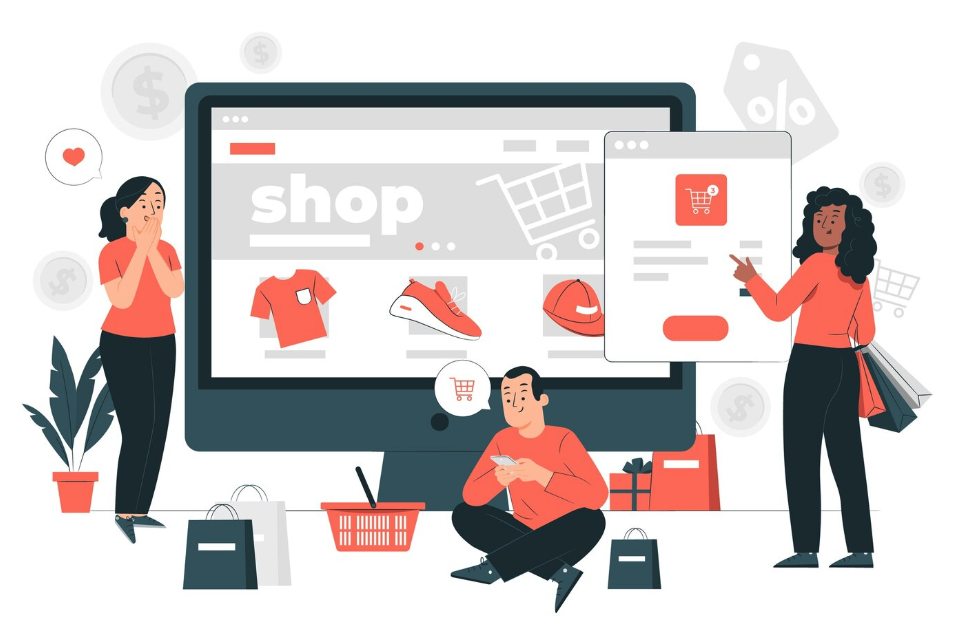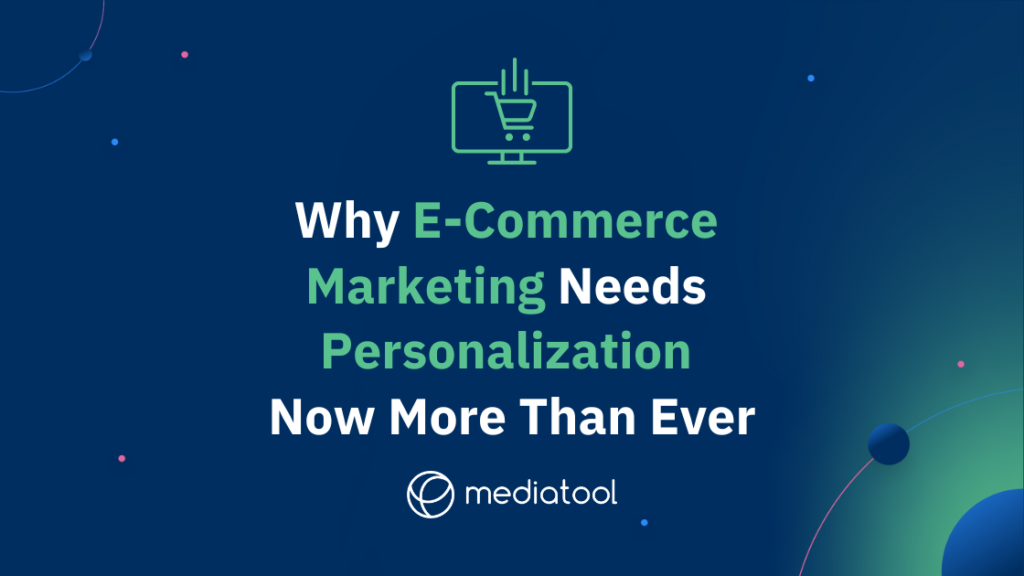Ecommerce sales have been thriving for the past couple of years. But with big changes in the data and privacy landscape, shifts in consumer behavior, and new marketing channels popping up constantly, eCommerce marketers need new ways to deliver value to customers.
The ‘death’ of third-party cookies is old news by now. Initially slated for 2022, then 2023, it looks like Google will cease support on Chrome in the second half of 2024.
This guide focuses on personalization strategies that enable effective Ecommerce marketing in a post-third-party cookie world.
The Third-Party Cookie Phase-out is Here. Are You Ready?
In 2021, a study by Mapp highlighted a curious trend: 78% of UK marketers reported increased sales, yet only 28% had developed strategies for marketing in a post-cookie world. This disconnect is critical for eCommerce brands, who are successfully attracting new customers but may struggle with bottlenecks, missed leads, and decreasing customer loyalty without a robust data strategy that adapts to the phase-out of third-party cookies.
Consumer expectations are changing. Google’s Director of Product Management, Ads Privacy and Trust, David Temkin, said it best in a blog post about a privacy-first approach to advertising:
“72% of people feel that almost all of what they do online is being tracked…and 81% say that the potential risks they face because of data collection outweigh the benefits, according to a study by Pew Research Center. If digital advertising doesn’t evolve to address the growing concerns people have about their privacy and how their identity is being used, we risk the future of the free and open web.”
It’s a bold statement. But while it seems pessimistic, there is a hopeful message buried underneath.
While the outlook might seem bleak, it opens avenues for innovation in eCommerce marketing. The future lies in leveraging first-party data, enhancing personalization, and ensuring transparency. This shift necessitates an integrated eCommerce marketing strategy that encompasses various facets such as search engine optimization, influencer marketing, content marketing, and social media platforms.
It’s essential for eCommerce businesses to understand their target audience and tailor their marketing strategies accordingly, utilizing social media marketing and email marketing as key channels.
For an online store, this means rethinking their eCommerce marketing strategies and tactics, focusing more on building a direct relationship with website visitors. User-generated content, efficient use of shopping ads, and maximizing eCommerce sales through search engines become pivotal.
Digital marketing efforts should be concentrated on not just driving online sales but also fostering customer loyalty and retention through loyalty programs and engaging marketing tactics.
Marketing channels are evolving, and eCommerce marketers must adapt by deploying a mix of marketing strategies that include leveraging social media influencers, optimizing product pages, and engaging in paid advertising like Google Ads and PPC campaigns.
The goal is to increase brand awareness, enhance customer loyalty programs, and ultimately generate sales.
This strategic shift towards a more privacy-conscious approach in digital marketing is not just a response to the phase-out of third-party cookies but an opportunity to build more meaningful and trust-based relationships with both new and existing customers in the eCommerce landscape.
Post-Cookie Planning: Build a First-Party Data Strategy

The Shift from Third-Party Cookies
Many marketers focus on the challenges of targeting customers once third-party cookies go away. But again, Google’s David Temkin makes a compelling point:
“People shouldn’t have to accept being tracked across the web to get the benefits of relevant advertising. And advertisers don’t need to track individual consumers across the web to get the performance benefits of digital advertising.
Advances in aggregation, anonymization, on-device processing, and other privacy-preserving technologies offer a clear path to replacing individual identifiers.”
In other words, third-party cookies were a crutch. A shortcut. A convenient one, sure, but they’re far from irreplaceable.
Crafting a Strategy Focused on First-Party Data
So, what should your post-third-party cookie strategy look like? It needs to focus on first-party data.
The switch is relatively simple for niche eCommerce vendors and B2C brands with a largely homogenous audience. We’ll explain why shortly.
The Challenge for Larger Brands
It will be harder for large eCommerce brands with broad product portfolios, especially those targeting diverse audiences and running several campaigns simultaneously.
According to research from GetApp and HubSpot, 41% of marketers believe they will struggle to track the right data. Nearly half (44%) anticipate spending 5-25% more on marketing to achieve the same outcomes as 2021.
Investing in Customer Relationships
Despite these challenges, the focus on building deeper customer relationships through first-party data is crucial. It’s a long-term investment that promises substantial returns in the evolving internet landscape, helping brands understand and cater to their customers more effectively. This customer-centric approach is key to succeeding in the post-cookie era.
Worried about wasting your budget? Read this: 5 Ways Technology Can Streamline Your Agency’s Workflow.
What is First-party Data?
The Essence of First-Party Data
First-party data is crucial for ecommerce businesses. It comprises information collected directly from customers or prospects as they interact with your company. This data, obtained from various digital marketing channels, forms the foundation of an effective ecommerce marketing strategy.
Types of First-Party Data
Key examples of first-party data include:
- User Behavior: Interactions on your ecommerce website or mobile app.
- User Preferences: Individual preferences of users.
- Demographic Details: Information like language and location, derived from the browser.
- Purchase History: Transactional data from your online store.
- Customer Profiles: Detailed customer profile data.
- Email Engagement: Interaction with email campaigns, a vital aspect of email marketing strategies.
Advantages Over Third-Party Cookies
Unlike third-party cookies, which track users across multiple websites for broad marketing purposes, first-party data is specific to your ecommerce site. It’s instrumental in understanding website visitors’ needs and behaviors, crucial for customizing marketing strategies and content marketing to boost online sales.
Impact on Marketing and Sales
For ecommerce marketers, first-party data is invaluable in creating targeted marketing tactics, from search engine optimization to social media marketing. It influences decisions about product features, marketing channel focus, and effective audience engagement.
Enhancing Customer Experience and Loyalty
Understanding first-party data is key to optimizing product pages for better search engine results and improving user experience on ecommerce sites. It plays a significant role in developing customer loyalty and retention strategies, providing insights into loyal customers’ preferences and behaviors.
First-party data is a pivotal component in crafting the best ecommerce marketing strategies. It aids in building brand awareness, driving sales, and enhancing customer engagement across various digital marketing channels, including social media platforms, Google Shopping ads, and PPC campaigns.
How eCommerce Companies Can Build a First-party Data Strategy

In the evolving landscape of eCommerce marketing, a shift towards first-party data strategies is essential for creating customer engagement that is both relevant and personalized.
This approach is particularly crucial for larger eCommerce brands and busy agencies, who may need to overhaul their audience targeting strategies fundamentally.
Smaller eCommerce businesses that focus on tracking basic website visitor behavior, preferences, and demographics may not feel the impact of the disappearance of third-party cookies as acutely.
However, for global brands and larger agencies, the transition to a first-party data strategy will likely require a complete reimagining of their marketing strategies, particularly those relying heavily on targeted display advertising and third-party ads.
To effectively adapt to this new approach, consider integrating the following elements into your eCommerce marketing strategy:
1. Collect Data From Owned Channels.
Utilizing First-Party Cookies
First-party cookies are essential in ecommerce, offering deep insights into user behavior, preferences, and purchase history. This data is crucial for refining search engine optimization and enhancing user experience on ecommerce websites.
Exploiting Owned Channels for Data Collection
Ecommerce marketers can gather valuable first-party data from several sources:
- Social Media Platforms: Insights from social media accounts inform marketing tactics and help understand customer preferences.
- Mobile Apps: Usage data from ecommerce apps reveals user shopping habits, aiding in personalizing the online store experience.
- Point-of-Sale and Call Centers: These interactions provide a comprehensive view of customer behavior and preferences.
- Email Marketing: Responses to email campaigns offer insights into customer interests, enhancing email marketing strategies.
Leveraging this data helps in building detailed customer profiles, crucial for targeting marketing efforts, improving customer retention, and acquiring new customers. It enables personalized experiences, contributing to increased online sales.
Integrating these insights into your ecommerce marketing plan enhances digital marketing campaigns. Utilizing targeted Google Shopping ads, paid search ads, and influencer marketing based on this data can lead to more effective ad spend and build brand awareness.
Harnessing first-party data from owned channels is key to a successful ecommerce marketing strategy, impacting everything from product page optimization to digital marketing campaigns. This approach ensures sustained growth and success in the competitive ecommerce landscape.
2. Actually Talk to Your Customers
Enhancing Customer Engagement Through Communication
One of the most effective ecommerce marketing tactics is to directly engage with your customers. Understanding their likes, dislikes, expectations, and what they want from your brand is invaluable. This can be achieved through various channels:
- Email Marketing Campaigns: Launch targeted email campaigns to solicit feedback on your products and services. This not only helps in understanding your existing customer base but also aids in refining your email marketing strategy.
- Social Media Interactions: Utilize social media marketing platforms to initiate conversations with your audience. Regular social media posts and engaging with comments can provide insights into customer preferences and improve your social media marketing campaign.
- Incentivized Feedback: Offering incentives, such as giveaways, discounts, or customer loyalty program benefits, can significantly increase response rates. This tactic not only garners more participation but also enhances customer loyalty and retention.
- Utilizing User-Generated Content: Encourage customers to share their experiences with your products. This not only provides direct feedback but also serves as content marketing, showcasing real-life usage of your offerings.
- Influencer Marketing: Collaborating with social media influencers can help gather feedback from a broader audience and improve your brand perception among potential customers.
By actively engaging with your customers, ecommerce businesses can gain deeper insights into their target audience, leading to more personalized experiences. This approach is crucial for improving the customer journey on your ecommerce store, enhancing user experience, and ultimately driving online sales.
Talking directly to your customers is a key element in developing the best ecommerce marketing strategies.
It not only helps in understanding the needs of website visitors and loyal customers but also plays a significant role in building brand awareness, generating sales, and will increase online sales for your ecommerce business.
3. Personalize Your eCommerce Marketing Across as Many Touch Points as You Can.
Creating Meaningful Customer Experiences
Personalizing your ecommerce marketing across various touchpoints is essential. This means tailoring everything from your marketing materials and product packaging to community support, based on the insights you gain about your target audience.
A personalized approach ensures that every interaction with your brand is relevant and engaging for your customers, enhancing customer loyalty and potentially increasing sales.
Centralizing and Analyzing Data for Effective Strategy
The key to effective personalization lies in the quality and centralization of your data. High-quality data is crucial for any ecommerce marketing strategy, particularly in a digital landscape without third-party cookies.
By collecting and analyzing data from various marketing channels, including social media channels, email marketing, and online advertising, you can gain comprehensive insights into customer preferences and behavior.
Using tools like Mediatool’s data integrations can consolidate your marketing data into a single, flexible dashboard. This centralized view allows ecommerce marketers to extract valuable insights and refine their marketing tactics.
Whether it’s optimizing product pages for search engines, creating targeted content marketing strategies, or engaging in influencer marketing, having all your data in one place empowers you to personalize your marketing efforts effectively and cater to the specific needs of your potential customers.
4. Be Transparent About How You’ll Use Your Customer’s Data.
Communicating Data Usage Clearly
In the world of ecommerce marketing, trust is a key factor. Brands can build this trust by being transparent about how customer data is used.
Direct communication with customers or potential customers about data practices not only fosters trust but also positively influences customer loyalty.
This transparency is especially important in digital marketing channels where data usage might not be immediately apparent to website visitors.
Impact on Ecommerce Marketing Strategy
Consumers appreciate when companies are upfront about data usage. By being transparent, ecommerce businesses can impress their audience, likely increasing loyalty and improving customer retention.
This approach is vital for optimizing your ecommerce marketing strategy, as it establishes a foundation of trust that enhances all other marketing efforts.
Whether it’s through social media marketing, email marketing, or paid advertising, clear communication about data practices strengthens the relationship with your target audience and can even increase sales.
It also ensures that ecommerce marketers are aligned with industry benchmarks and best practices in handling customer data.
Three Ways eCommerce Digital Marketers Can Use First-party Data to Deliver Personalized Customer Experiences
1. Dynamic Content
While dynamic content is not new in digital marketing, integrating it effectively with first-party data remains a challenge for many ecommerce marketers. To elevate your ecommerce marketing strategy:
Think Beyond Basic Automation:
Move past standard practices like abandoned cart emails and related product suggestions. Utilize first-party data to create more innovative dynamic content.
Personalize Customer Journeys:
Develop personalized journeys for your customers, ensuring each touchpoint, from email marketing to social media posts, is tailored to individual preferences.
Omnichannel Personalization:
Leverage data across all digital marketing channels, from your ecommerce website to social media platforms, for a cohesive and personalized customer experience.
Value-Adding Content:
Focus on creating content that adds value to the customer’s experience, be it through an informative blog post, targeted google shopping ads, or engaging social media marketing campaigns.
By effectively using first-party data in dynamic content creation, ecommerce marketers can enhance customer loyalty, attract new customers, and ultimately drive online sales. This approach also helps in building brand awareness and improving search engine results through targeted and relevant content.
2. Rebuild Your eCommerce Marketing Operations Around the Customer.
In the bygone days of third-party cookies, marketers might not have seen customers as real people. Well, those days are over. eCommerce marketing needs to view users as the complex, emotional, unpredictable individuals they truly are.
This means reorganizing to make customer value your marketing ‘north star’. This will have several benefits, ranging from strategy to operations and execution:
- Filtering out irrelevant data
- Analyzing data based on value-adding opportunities
- Establishing goals and KPIs based on customer value
- Focusing on long-term value over short-term engagement
- Aligning internal teams
- Eliminating data siloes
Of course, it’s easier said than done. Check out our eBook, The Rising Importance of Marketing Operations for CMOs, for tips and tools to help big brands rethink their marketing operations approach.
3. Embrace the Chaos of Non-linear Customer Journeys
The phase-out of third-party cookies earns a lot of attention. Meanwhile, the traditional marketing funnel has slipped quietly into obsolescence.
Customer journeys are no longer linear. For dynamic content and personalization through first-party data to work correctly, marketers and salespeople need to forget funnels and embrace an agile approach.
In practice, this doesn’t mean tactics like lead scoring are irrelevant. It means sales and marketing must align to create personalized, value-adding engagements based on a prospective customers needs.
This is where a big-picture view of customer behavior is vital. By pulling insights together from all your marketing channels, you can:
- Aggregate first-party data
- Identify trends
- A/B test content to see what works
- Monitor marketing performance in real-time
- Make minor optimizations all the time
- Find trigger points that convert.
You can get some of this from Google Analytics, but an all-in-one campaign management platform like Mediatool gives a better overview of your data.
If you’re interested in reading more, our guide on improving the relevance of your ads has a detailed breakdown.
Ecommerce Marketing Evolution is a Company-Wide Effort
For e-commerce businesses to adapt to new marketing landscapes and thrive without third-party cookies, customer value needs to be a company-wide initiative. Every department needs to align to deliver value.
For example, if your marketing is hitting the mark, but the customer service isn’t meeting the same standard, you won’t reap the rewards of all your hard work.
This shift needs to be driven by leaders and CMOs and championed by influencers at every level. From decisions about investing in the right marketing campaign management technology to ensuring everyone understands the importance of data and can access the information they need, the whole company must be on the same page. It’s the only way to ensure every move delivers value.
Conclusion: Embracing First-Party Data for Future-Proof Ecommerce Marketing
Adapting to a New Marketing Landscape
The transition from third-party cookies to first-party data represents a pivotal shift in ecommerce marketing. This change challenges marketers to innovate and adopt customer-centric strategies that leverage direct insights from their audience.
Opportunities for Ecommerce Brands
For both niche and larger ecommerce brands, the focus on first-party data opens up opportunities for more personalized and effective engagement. Brands must now harness this data to create tailored customer experiences, utilizing dynamic content and omnichannel personalization.
Building Trust Through Transparency
Key to this transition is the emphasis on transparent data practices. Clear communication about how customer data is used will enhance trust and loyalty, which are vital in maintaining competitiveness in the ever-evolving digital marketplace.
A Collaborative Effort for Success
Successfully navigating this new era requires a unified effort across all company levels. Aligning every department around the goal of delivering value-driven customer interactions is essential. This collaborative approach ensures that ecommerce marketing strategies are not only more effective but also more aligned with evolving consumer privacy expectations.





